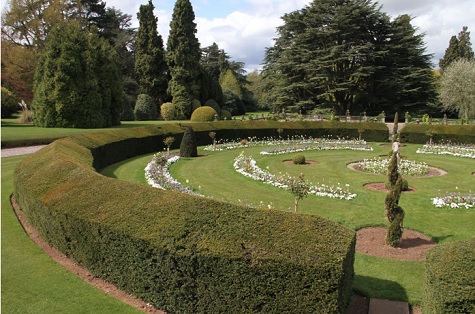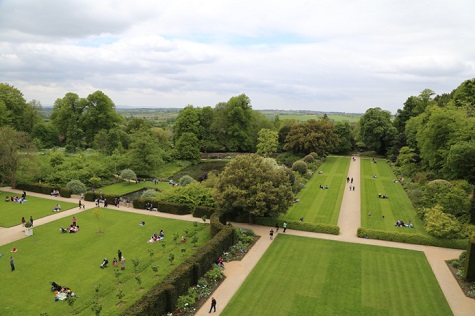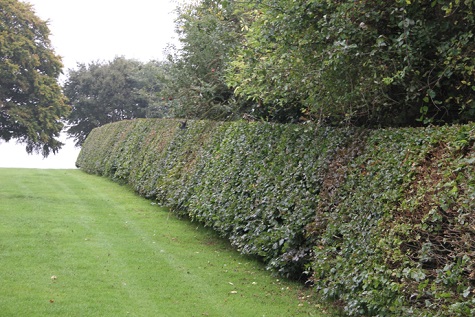In the UK there are no specific nationwide laws dictating when you can cut hedges. However, there are guidelines and best practices to follow to avoid harming nesting birds and wildlife. These guidelines are commonly referred to as the "Wildlife and Countryside Act 1981" and the "Wildlife and Countryside Act (Northern Ireland) 1985."
The general rule of thumb is to avoid cutting hedges between March and August. This period is known as the bird nesting season. During this time, many birds are nesting, and it is an offense under the Wildlife and Countryside Act to intentionally take, damage, or destroy the nest of any wild bird while it is in use or being built.
Cutting hedges during this period can disturb and harm nesting birds, their eggs, and chicks. If you need to trim hedges during the nesting season due to safety concerns or other reasons, it's essential to carefully check the hedge for active nests before starting any work. If you discover an active nest, you must postpone the trimming until the nesting season is over and the birds have fledged.

Outside the nesting season, between September and February, it is generally considered safe to cut hedges. However, you should always be mindful of local bylaws or regulations that may apply to hedge trimming in your specific area.
Please note that while these guidelines aim to protect wildlife, they may not be the only regulations or considerations relevant to hedge cutting in the UK. It's always a good idea to check with your local authorities or seek advice from wildlife conservation organisations to ensure you're in compliance with all applicable laws and best practices.

With the bird nesting season coming to an end at the end of August, many hedges will have put on some significant seasonal growth since they were last cut.

I, like many gardeners, will soon be busy catching up with the maintenance of many ornamental hedges. We are now blessed with a wide range of hedge cutting machinery, both petrol and battery powered, to undertake this work. I have, over the years, had the privilege to use both types of powered hedge trimmers.
Hedge usage
Hedges serve to keep stock in a pasture and out of crop fields. They also provide shade for stock and protection from the wind and guard against soil erosion. Hedges are an attractive feature of the British countryside and a valuable wildlife habitat, not just the hedge itself but also any associated ditch and bank. Hedgerows provide a rich source of food for birds and small mammals. They may also link otherwise isolated wildlife habitats thereby creating valuable corridors. Once planted, hedgerows require only periodic maintenance to provide a permanent barrier.
Popular hedgerow species include field maple, hazel, plum, crab apple, holly, sweet chestnut, elm, beech, hornbeam, ash, whitebeam, wild privet and spindle. Poisonous shrubs, such as yew and box, are not planted in stock hedges. Beech is not commonly found in farm hedges, since it is attractive to stock.
Both beech and hornbeam retain their leaves throughout the winter when managed as a hedge, shedding them only in spring, when emerging new shoots finally dislodge them, and it is this, along with their lush summer colour, that makes them so popular in gardens.

It was the plant collectors of the Victorian era who brought to this country a whole new variety of plant species that provided new material for landscaping and hedging in many of the Victorian parks and gardens. Over the years, these new species became very popular and widely used in all manner of environments.
Natural hedging and planting of trees on sports fields and golf courses has been popular for years, and there are many examples of old plantations - for example, a line of poplar trees being used to shield between fairways and tees. In the early 1970s, many parkland golf courses started planting conifer trees around greens and tees as they were fast growing and provided colour all year round. The same can be said for bowls clubs, schools and many parks who used hedges and trees, especially conifers, for screening purposes.
The popularity of hedges is that, not only do they provide a practical aid in creating barriers between properties and land assets, but they also offer an essential resource for wildlife.
Hedges support up to 80% of our woodland birds, 50% of our mammals and 30% of our butterflies. The ditches and banks associated with hedgerows provide habitat for frogs, toads, newts and reptiles.

Thick hedges with wide bases that provide plenty of cover are best, but there should be a variety of shapes and sizes from formal hedges to naturally developed stretches. Hedgerows with large numbers of woody species hold more birds. Trees, particularly oaks, support a rich variety of insects and are good song posts. Old trees have holes where blue tits, owls and kestrels, as well as bats, can nest.
Planting hedges can offer other benefits, both practical and ecological, including:
- Hedges can serve as windbreaks, helping to reduce wind speed and protect more delicate plants and structures from strong winds.
- A dense hedge can also help to mitigate noise pollution, providing a more peaceful and tranquil environment.
- The roots of hedging plants help stabilise soil and prevent erosion, especially on slopes and vulnerable areas.
- Hedges are living plants, and like all vegetation, they play a role in capturing carbon dioxide from the atmosphere, thus helping to mitigate climate change.
- Hedges can enhance the overall aesthetic appeal of an area, adding structure, texture, and greenery to the landscape.
- Instead of using artificial fences, hedges offer a more natural and aesthetically pleasing way to mark boundaries.
- Once established, many hedging plants require relatively low maintenance, making them a cost-effective landscaping option.
- Hedges can provide shade in hot weather, helping to cool down the surrounding area.
When selecting hedge plants, consider choosing native species that are well-suited to your local climate and soil conditions, as they will generally require less water and maintenance while providing better support for wildlife.